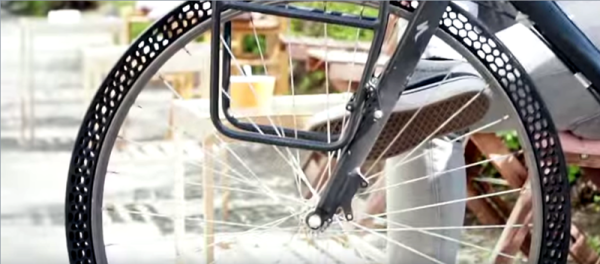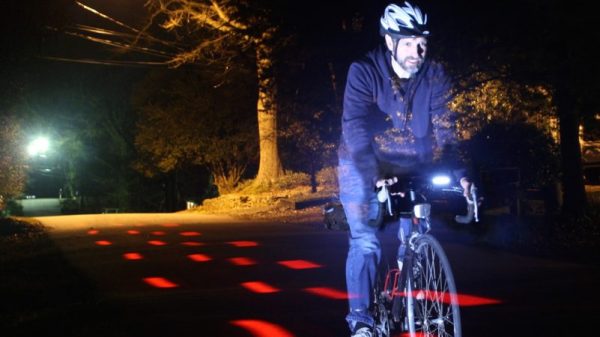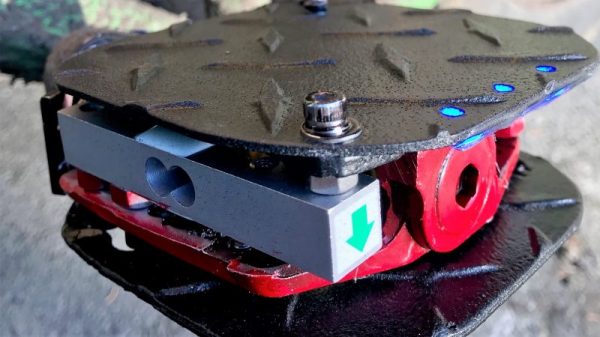To show off its new TPU filament called PRO FLEX, BigRep GmbH posted a video showing a 3D printed bike tire that uses a flexible plastic structure instead of air. The video shows them driving the bike around Berlin.
According to the company, the filament will allow the creation of a large number of industrial objects not readily built with other types of plastic. Their release claims the material has high temperature resistance, low temperature impact resistance, and is highly durable. Applications include gear knobs, door handles, skateboard wheels, and other flexible parts that need to be durable.
The material has a Shore 98 A rating. By way of comparison, a shoe heel is typically about 80 on the same scale and an automobile tire is usually around 70 or so. The hard rubber wheels you find on shopping carts are about the same hardness rating as PRO FLEX.
Obviously, a bicycle tire is going to take a big printer. BigRep is the company that makes the BigRep One which has a large build volume. Even with a wide diameter tip, though, be prepared to wait. One of their case studies is entitled, “Large Architectural Model 3D Printed in Only 11 Days.” Large, in this case, is a 1:50 scale model of a villa. Not tiny, but still.
We’ve looked at other large printers in the past including 3DMonstr, and the Gigimaker. Of course, the latest trend is printers with a practically infinite build volume.
Continue reading “3D Printed Bicycle Tire Not Full Of Hot Air”

















